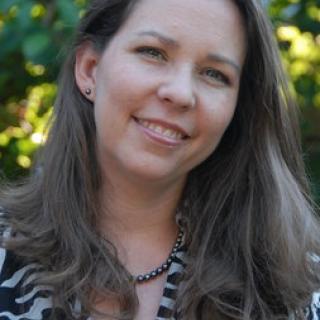The salmon has long been an icon of the Pacific Northwest, from its role as a life-sustaining food, to a symbol of nature’s perseverance. Every fall, these amazing fish complete an epic journey. After spending a few years in the ocean, the salmon begin a long trip home by making their way back to the river in which they were born.
Only the fittest of the breed survive to make it back their birthplace. Not only do they swim long distances, against the current, up fish ladders and over waterfalls, they also must avoid predators. For the ones who make it, the goal is to complete their life cycle by spawning. It is not known exactly how the fish know their birthplace, but one theory is that they find their way through an extraordinary sense of smell.

This October, you can join volunteer naturalists at five sites along the Cedar River in the Seattle area to get a glimpse of the journey of sockeye, coho and Chinook salmon as they swim from the ocean, through the Chittenden Locks, through Lake Washington, and up the Cedar River to spawn. Naturalists point out the main species of salmon in the Cedar, answer questions or even give tours at some locations. This is not only a wonderful opportunity to see these fish in the wild, but it’s also a chance to get outside and enjoy the beautiful fall weather and colors in our area.
ParentMap talked with Charlotte Spang, Cedar River Salmon Journey program manager, about this free family activity.
What sites would you recommend most for families with young children?
The Renton Library site is a great, safe place for kids to view salmon, especially for the kid that wants to look at a fish for maybe two minutes -- because there is a playground right next to it. Here you can look down on the river from a bridge and get a great view of the fish. It’s really exciting to see salmon spawning in such an urban environment. Then, if you are so inclined, you can cross the street and go to the Cedar River Park site. At this site you might see hatchery employees removing fish from the weir for the hatchery.
Another kid-friendly site is at Cavanaugh Pond (Maple Valley Highway and S.E. 8th Drive in Renton). At this site, you can take a walk guided by a naturalist down a short, flat trail. The trail is wide enough that kids can run around. The walk ends at a nice beach along the river. The naturalists talk about native plants and how to help the salmon. Here you might see ducks, heron or even beavers as well as salmon.

What site would you recommend for older kids?
Landsburg Dam and Park [in Ravensdale] is the most “formal” of the tours. The tour to Landsburg Dam varies in length but is approximately 30-40 minutes (sometimes shorter and sometimes longer depending on the volunteer naturalist leading the tour). We walk up a wide gravel road to a paved area overlooking the dam and hatchery operations. The incline of the path is gentle.
This area is off-limits to the public except during these tours. Because the Cedar River Watershed supplies drinking water to the greater Seattle area, for security, you must sign in for the tour and stay with the group. Here, naturalists talk a lot about the watershed, water supply, and the salmon hatchery. You may even get the chance to see hatchery staff hand-sorting salmon.
If you have younger children, you don’t have to take the tour. You could still picnic in the park and view salmon from an overlook. Naturalists are available to answer questions. You could then cross the street and hike down to the trestle bridge and see more salmon. The park is just beautiful, and Landsburg is where I’ve seen the most wildlife. I’ve seen otters and American Dipper birds there.
Riverview Park site [in Renton] is good for older kids and adults, but use caution when bringing small children there. The site is right off of a busy highway.”
What are some of your favorite fun or unusual facts about salmon?
Salmon can get sunburnt, and their sense of smell is a thousand times better than a dog’s!
What else would you like for readers to know?
People get overwhelmed by global warming and lots of negativity about the environment. But then you go to the river, and the salmon are still coming back. And you learn that there are small things you can do to help the salmon. Things that if we all did collectively, we could, and do, make a big impact. It empowers people to take action.

And if you haven’t ever had the opportunity to see a salmon spawning, it is truly a magnificent thing. We share our very urban environment with this amazing fish. There is just a big ‘wow’ factor in watching the salmon.
If you go ...
Where and when: The Cedar River Salmon viewing sites are open and staffed by naturalists every weekend day in October from 11 a.m.-4 p.m.. For full details visit, this page on the Friends of the Cedar River Watershed site.
Although it’s fun to take a guided tour and hear from a naturalist about the salmon, families can also see salmon at four of the five sites (every site but Landsburg Dam) mid-week in October.
Other tips: For tips on how to live a more salmon-friendly lifestyle, see this page on the Friends of the Cedar River Watershed site (scroll to the bottom). For a map and calendar of other salmon-related events and viewing sites outside of the Cedar River visit Lake Washington/Cedar/SammamishWatersheds.
5 books on the salmon journey for kids
Want to get your kids excited by the salmon journey by reading about it first? Try one of these books recommended by Sharon Chastain, Children’s Librarian at Maple Valley Library.
1. Sockeye's Journey Home: The Story of a Pacific Salmon, by Barbara Gaines (easy fiction)
Swimming against the current and avoiding fishing nets and predators, sockeye salmon travels from the Pacific Ocean through Puget Sound, the Ballard Locks Canal, Lake Union, Lake Washington, and up the Cedar River to return to his birthplace and spawn.
2. Salmon Forest, by David Suzuki and Sarah Ellis (easy fiction)
During a walk in the woods with her father, Kate learns about the life cycle of the sockeye salmon, as well as its place in the larger circle of life.
3. Salmon: Tireless Travelers, by Andreu Llamas (juvenile nonfiction)
Describes the physical characteristics, habitat, behavior, migration, ancestors, and predators of these efficient fish.
4. The Life Cycle of a Salmon, by Bobbie Kalman and Rebecca Sjonger (juvenile nonfiction)
The Life Cycle of a Salmon looks at the growth of a salmon from egg to adult, and provides children with a thorough account of the five distinct stages of a salmon's life cycle: egg, alevin, fry, smolt and adult.
5. The Prince and the Salmon People, retold by Claire Rudolf Murphy (folktale)
When the salmon stop coming to his village, a Tsimshian prince travels to the world of the Spring Salmon People and discovers the vital connection between the human and animal worlds.

Tiffany Doerr Guerzon is a freelance writer and the mother of three children, including a teen. Read more of her writing at TDGuerzon.com.











